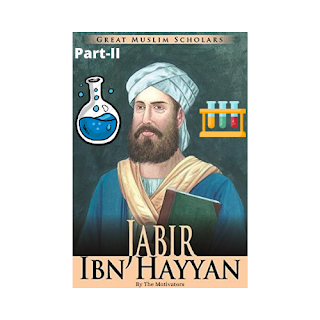JABBIR IBN HAYYAN WHO WAS A CHEMIST OF HIS TIME, DID NOT TEACH CHEMISTRY TO EVERYONE
Part-ii
If a medicine has a lot of softness and it needs to be made dirty, then its dilute and liquid ingredients are blown away by heating. Most rabbis are made with this formula. Crystallization means making pens. If pure sorghum is dissolved in water and it is taught, then it changes into pen form. Similarly, if sulfur is melted and left, then it becomes pen. In this way, some things take the form of writing through compilation and some through compilation. Calcination the burning of a medicine to make it like lime is called “Calcination”. The term incineration is very common in this. If the medicine burns to ashes or turns into coal then it is called “incineration process”. Cow opal and kilns are used in Taklis. What is obtained in the form of lime after taklis is called muklis (kishta). Jabbir said that in the process of making a metal boat, its weight increases. Sublimation means blowing the essence. In this process, a static medicine is first heated and converted into a form of vapor. These vapors are then boiled and frozen in another container.
Jabbir excelled in chemical experiments and developed the principles and rules that are still in use today, despite the passage of a thousand years:
- Sublimation of medicines by the process of sublimation. This method was first adopted by Jabbir.
- He discovered the method of crystallization.
- He invented the method of filtering.
- He identified three types of salts.
- He discovered the method of oxidation by burning the metal. The recipe is given in his book Ark of Wisdom.
- Discovered the method of dyeing leather and cloth.
- Researcher Jabbir prepared dye to darken hair.
- The most important invention of Jabbir is Qara-e-Anbiq, which is a means of extracting liquor.
- He invented varnish for waterproofing cloth and wood.
- He suggested manganese dioxide in glass making.
- He said that iron can be made into steel by refining it, meaning he was also familiar with metallurgy. He devised a way to protect iron from rust.
- Regarding metals, he said that all metals are made of sulfur and mercury. He said that sulfur in a metal would become a new metal if its properties were rearranged keeping in view the components of mercury.
- He made wax garments to keep things from getting damaged by moisture.
- He invented the formula for making grease.
- He discovered many practical chemical processes, thus laying the foundation of applied science.
- He prepared an acid called Maa al-Muluk Aqua regia in which gold was dissolved.
- He also started the method of writing in golden letters. He invented ink for valuable documents.
- He made sulfuric acid, he made nitro hydrochloric acid, he made caustic soda, and he made CH3COOH, which he called vinegar acetic acid. He discovered sulfuric acid (found in lemons) and tartaric acid. What is obtained during making wine?
- He said that boiling the wine produced vapors, which led to the discovery of ethanol (alcohol) by Alkandi and Al-Razi.
- Jabbir invented ways to make lead carbonate from sulfide, and arsenic and coal antimony.
- Jabbir described ways to make pure parrot copper sulphate, alum alum, salmon pen ammonia salt.
- Jabbir made mercury oxide and acetate of other metals which are sometimes in the form of pens.
- Jabbir divided all metals according to condition and said that mercury and sulfur are prominent in all metals.
- Jabbir said that there is a special relationship between the quantity of matter and the speed of chemical process and that is why he invented balance.
- He made paints which can be used on clothes and skins.


